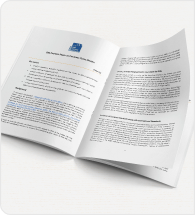• Disrupted by COVID-19, businesses, citizens, and public administrations are turning to digital solutions to keep working
• ICT standards are the unsung heroes of this new wave of “forced digitalisation”
• Internet connectivity, data sharing, cybersecurity: Standards allow stakeholders to work safely and do their best to mitigate the crisis.
Standards could help save the economy. Indeed, thanks to BIM Standards, data sharing across value chains has helped to design hospitals in 24 hours and prepare all required drawings for constructions in just 60 hours to accommodate large numbers of newly infected patients in record time.
ICT technologies like mobile communications, data transfer, video streaming, and others are robust only thanks to standards. For example, a standard has been the workhorse of the new norm of working from home: the IEEE 802.11, also known as Wi-Fi. Without reliable wireless connectivity, people wouldn’t be able to work nomadically from across their home.
Millions of people can continue to work thanks to smart digital solutions, many of which are provided by innovative European SMEs. Virtual conferences and classrooms, health applications, legally binding digital signatures—a large number of ICT standards are involved in every step of these processes.
The internet’s DNA is made of standards
The Transmission Control Protocol and the Internet Protocol (TCP/IP) are the most fundamental standards for machine-to-machine connectivity. TCP/IP are essentially the DNA of the internet. On the physical connectivity level, Wi-Fi, 3G, 4G and 5G are all ICT standards as well. They connect us to our workplace, our families, friends and loved ones every day of our lives. These standards also provide the backplane for (more or less, depending on your opinion…) effective high-level coordination of the crisis response.
And ICT standards aren’t just for adults, either. Beyond internet connectivity, children and students are benefitting from specific e-learning standards like SCORM and ePUB, which were developed to help educators achieve their learning goals.
Video conferences require a secure connection based on a set of cybersecurity standards, a streaming media protocol such as HTTP Live Streaming, a streaming format to transmit videos (m3u8), and a protocol to transmit voice over the internet instead of traditional phone lines (VoIP). Using a wireless handset for better audio quality requires a connection via Bluetooth. For the most part of the call, the video is compressed through MPEG-4 or H.264 standards to save bandwidth. Online meetings can be saved in video- (MP4) or audio (MP3) formats.
Standards as the basis for trust and security
Sending/receiving emails require the use of POP3, iMAP/SMTP standards. Sharing files entail the use of file format standards such as ODT or PDF, while compressing files need standards such as RAR, ZIP.
Standards for electronic trust services enable the digitalisation of paper-based transactions such as signatures, invoices and registered delivery following the eIDAS Regulation.
IT security standards like ISO-IEC 27001 help companies to manage cyber risks when they run their business remotely. An SME Guide for the implementation of ISO/IEC 27001 has been published by Small Business Standards (SBS) to make the standard easier to understand for small businesses.
To sum up: Despite being little known to the public, ICT standards are the base layer of all modern, digital technologies that citizens and businesses use every day. Without them, the European economy would crumble right now as COVID-19 forces most physical workplaces to close. SBS and the European DIGITAL SME Alliance advocate for the interests of SMEs to be taken into account in ICT and other standardisation processes. We encourage all enterprises, citizens, and public administrations to stay safe and resort to the many useful digital solutions provided by innovative European SMEs in this crisis!
Drafted by SBS Member, the European DIGITAL SME Alliance.




























